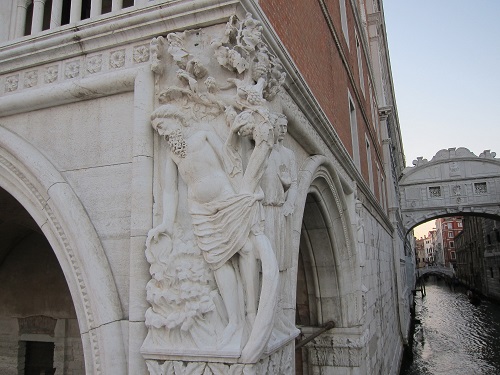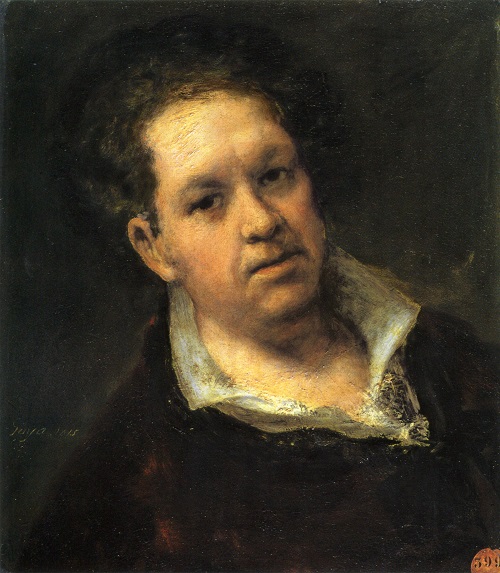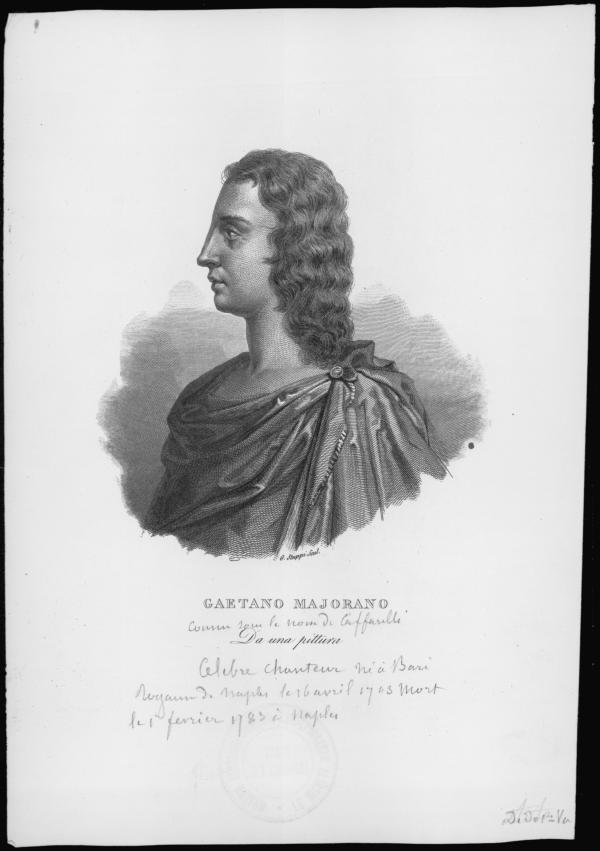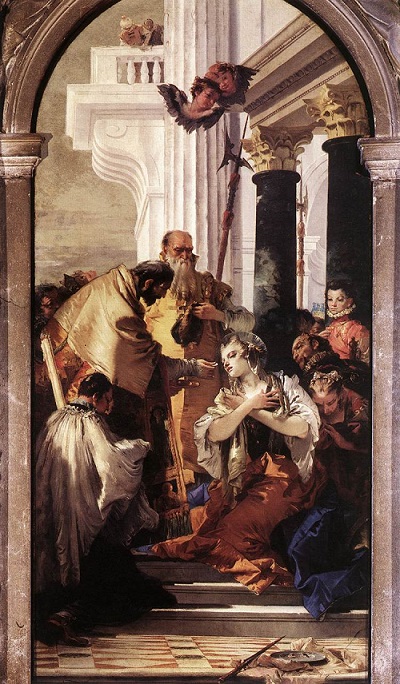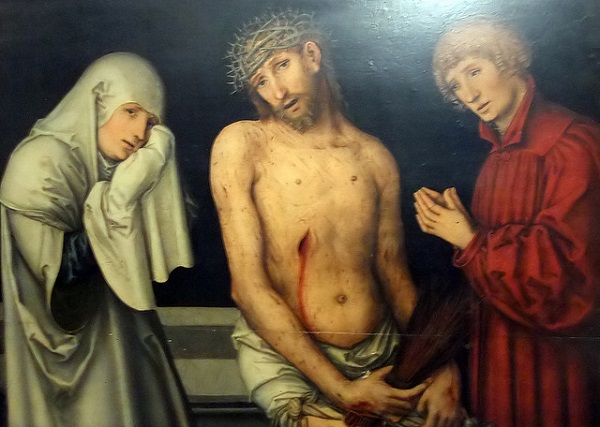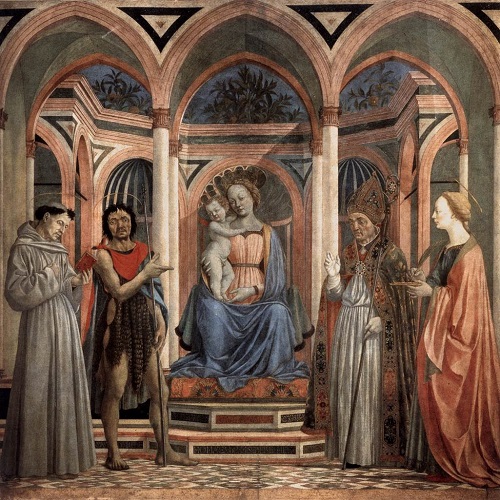
(Tempura on panel, 209 x 213cm) Also known as The ‘Saint Lucy Altarpiece’
Domenico Veneziano (active 1438-61) arrived in Florence pursuant to a letter of 1438 asking Pietro de’Medici for work. Even Vasari knew little about Veneziano and invested anecdotes in his account of the artist’s life. even going as far as to claim that he had been murdered by Andrea del Castagno, whereas in fact, Castagno predated Veneziano and is said to have died in the plague of 1457.
The work, signed and dated about 1445, comes from the Florentine church of Santa Lucia dei Magnoli and shows the Madonna enthroned with Child among the saints (left to right) Francis, John the Baptist (whose face is the self-portrait of the painter), Zenobius and Lucy. The sacra conversazione is placed in a completely Renaissance architectural setting. This artwork is probably the first and oldest altarpiece with a rectangular form and without a gold background, typical of Gothic polyptych. This altarpiece is regarded as one of the first achievements of the new Renaissance art.
Saint Zenobius, the Bishop and patron saint of Florence is standing with Saint Lucy, a virgin of Syracuse, who is holding a plate which represents the plate she is said to have sent to her pagan suitor Cousel Paschasius (who denounced her as a Christian) on which were her eyes, which she plucked out. The inclusion of Saint Francis is significant in altar pieces of the Virgin and Child because of his Order’s belief in the doctrine of the Immaculate conception, which was hotly disputed by the Dominicans. Saint John’s inclusion comes from his saying: “Behold the Lamb of God, who takes away the sin of the world” (John 1:29) and he links the onlooker to the holy figures. The inclusion of Saint Lucy in this altarpiece is also quite fascinating and it is assumed is associated with her being a Virgin saint. (You will find a previous piece on this blog called “the Eyes of St Lucy” which tells her story).
It is interesting to also note that it is only Saint John and the Virgin whose eyes are directed at the onlooker. while the eyes of the Child are directed, it would seem at he Saint John who spoke the words which identified Jesus for who he was to be.
But what really stands out in the Uffizi altarpiece is the presence of this pale and delicate light coming from a natural source, like an open window with a ray of warm sunlight streaming in, lighting up the peaceful composition and creating a shadow against the background, as evidence of its existence. This particular idea of lighting is Domenico’s greatest debt to the art of Fra Angelico, and also one of his most extraordinary and original achievements.
I find this a very beautiful piece and although the image above does not do the altarpiece justice, it does provide good reason for the original to be viewed. You will not forget it.

